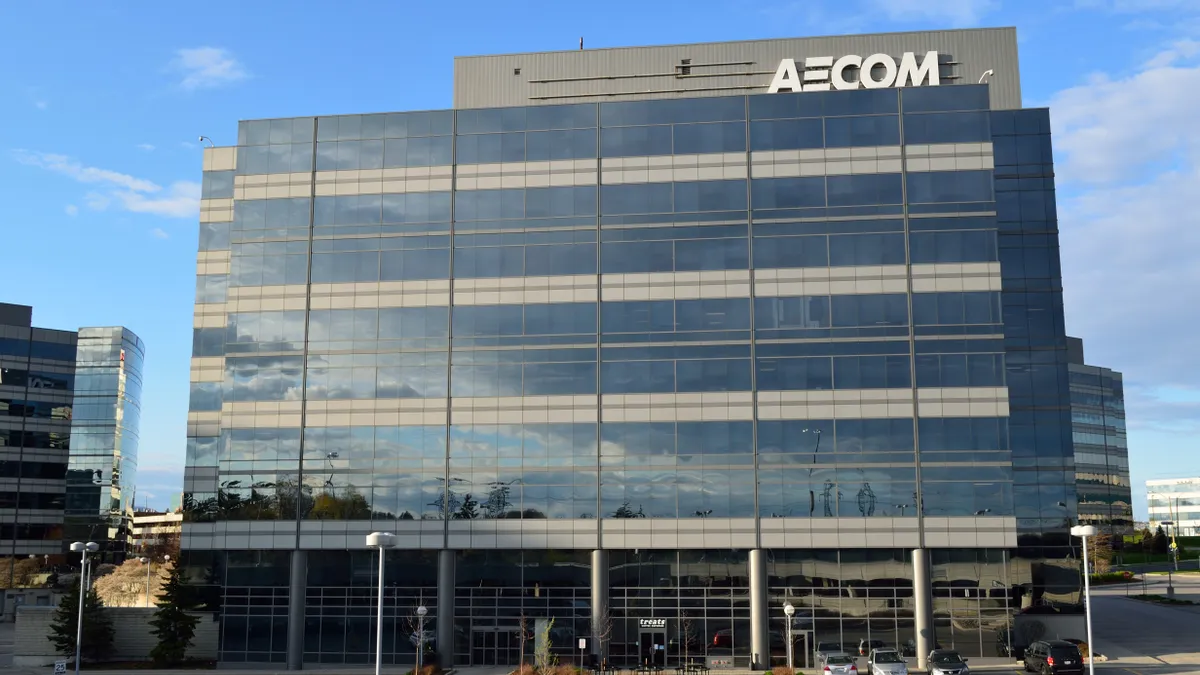One of the upsides of 2020’s COVID-19 pandemic, if you can call it that, is the accelerated pace of technology adoption by construction firms.
While the industry has been lambasted as a technology laggard for years, reflected by its overall productivity stagnation for the last half century, many companies have been forced by the pandemic to leverage virtual conferencing tools; remote health, safety and site monitoring technologies; and cloud-based project management platforms.
All of those solutions are helping construction combat the impacts of COVID-19 in the short term, but one area where construction may be making even more meaningful inroads leveraging technology to increase productivity is on the design and project analytics front.
In a recent webcast hosted by Citi analyst Andrew Kaplowitz last month, Los Angeles-based AECOM provided new insight into exactly how the accelerated adoption of technology brought on by the pandemic could net a productivity boost for construction coming out of it.
A partial re-introduction of new CEO Troy Rudd, who recently took over from outgoing chief Michael Burke, the event highlighted how AECOM’s use of global design center libraries and swapping different aspects of various customer designs into new jobs can lend more of a manufacturing profile to AEC project delivery, parlaying repeatable processes into multiple builds without reinventing the wheel at each new groundbreaking.
“Today when we do our work for our clients, our designs are effectively captured electronically,” Rudd, the company's former CFO, said during the webcast. “We have the ability through capturing that information in digital libraries to use that information repetitively in future designs, at the same time taking a significant piece of the work that may have been done in a local office.”
That repeatable aspect of designs and projects has been a sort of holy data grail of major construction firms. Both Sweden-based global construction behemoth Skanska, as well as Bethesda, Maryland-based Clark Construction recently outlined to Construction Dive how they are working to capture data more effectively from past projects to use in future ones.
“Benchmarking and understanding cost on projects is a very simple area where you can take the historical data, the actual cost of product, and you're able to demonstrate to a client what a certain trade might run for a certain size product in a certain location,” said Anita Woolley Nelson, Skanska USA Building’s chief strategy officer. “You start to be able to pull comprehensive information over a period of time."
Remote work here to stay
Rudd also made note of the fact that nearly 90% of AECOM’s employees have continued to work remotely throughout the pandemic and could continue to do so even after it is over.
“I really do see this as industry-changing,” Rudd said about the pandemic. “It is changing the way that we work. And I think it will create a much different competitive landscape and will create a significant competitive advantage for the people that have scale and have already started on this journey of investment in digital and greatly using design centers.”
Indeed, while some construction executives have lamented major employers announcing they wouldn’t return to their offices until mid-2021 or later, Rudd seemed to relish the opportunity remote work could provide at the firm, describing the company’s plans for what it’s calling its “workplace of the future.”
“The workplace of the future initiative is really focused on how our professionals are going to work differently, how we're going to equip them differently and how we're going to create more flexibility for those professionals,” Rudd said. “It's also going to change how we're going to provide, ultimately, our service for our clients and how we're going interact with those clients.”
Laying out a plan to use centralized global design centers to swap out parts of different projects repeatedly, Rudd said doing so would help AECOM pass on captured savings to its clients.
“We'll have the ability to be much more efficient in delivering the design by taking advantage of the information we've captured digitally around individual projects and to make much better use of our regional and global design centers to ultimately deliver that work cheaper, faster, and ultimately at higher margins for ourselves and for our clients,” Rudd said.
Less real estate needed for construction firms?
One question that Kaplowitz asked, echoing other queries from the company’s 3Q conference call, was whether AECOM could use the emerging remote nature of its workforce to leverage – i.e. sell – parts of its underlying real estate portfolio to gain even more efficiencies.
“It is going to obviously change the way that our real estate footprint is positioned,” Rudd said. “There will be some additional benefit as we kind of move to the workplace of the future, driving some efficiencies in productivity and some of our real estate footprint. So those are the things that we're focused on.”























